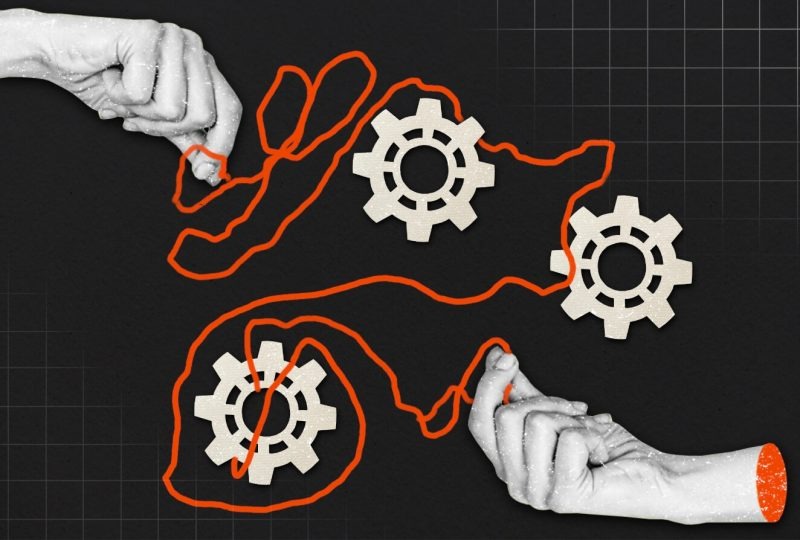Introduction to Algorithmic Trading
Algorithmic trading, also known as algo trading, is the use of computer algorithms to automatically trade assets according to predefined criteria and instructions. This method of trading has revolutionized the financial markets, including the oil trading sector. The use of algorithms in trading has grown significantly over the years, with high-frequency trading (HFT) being one of its most notable applications. If you wish to learn about investing with education companies, you might consider visiting Bitcore Momentum.
Key Concepts and Terminology
In algorithmic trading, algorithms are used to execute trades at high speeds and frequencies, often leveraging advanced mathematical models and analysis techniques. This approach differs from traditional trading, where decisions are made manually based on human judgment. HFT, a subset of algorithmic trading, involves executing a large number of orders at extremely high speeds, often in milliseconds or microseconds.
Types of Algorithmic Trading Strategies
There are several types of algorithmic trading strategies used in the oil market:
- Trend Following: This strategy involves identifying and trading in the direction of the prevailing market trend. Algorithms analyze historical price data to identify trends and execute trades accordingly.
- Mean Reversion: Mean reversion strategies aim to capitalize on the tendency of prices to revert to their historical averages. Algorithms identify overbought or oversold conditions and execute trades to profit from price corrections.
- Sentiment Analysis: This strategy involves analyzing news articles, social media posts, and other sources of information to gauge market sentiment. Algorithms use this information to predict price movements and make trading decisions.
- Arbitrage Opportunities: Arbitrage strategies exploit price differences between different markets or assets. Algorithms identify these price discrepancies and execute trades to profit from them.
Components of an Algorithmic Trading System
An algorithmic trading system consists of several key components:
- Data Sources and Feeds: Algorithms rely on real-time and historical market data to make trading decisions. Data sources include price feeds, news sources, and economic indicators.
- Pre-Trade Analysis and Strategy Formulation: Before executing a trade, algorithms perform extensive analysis to formulate trading strategies. This may involve backtesting strategies on historical data to assess their effectiveness.
- Order Execution and Risk Management: Once a trading strategy is formulated, algorithms execute trades automatically. Risk management techniques are used to limit potential losses and manage exposure to market risks.
Technological Infrastructure for Algorithmic Trading
The success of algorithmic trading depends on a robust technological infrastructure:
- Hardware Requirements: High-speed servers and low-latency connections are essential for executing trades quickly and efficiently.
- Software Development and Programming Languages: Algorithms are typically developed using programming languages such as Python, Java, or C++. Specialized software platforms are also used to develop and deploy trading algorithms.
- Cloud Computing and Virtualization: Cloud computing and virtualization technologies have made it easier for traders to access computing resources and scale their algorithmic trading operations.
Challenges and Risks in Algorithmic Trading
While algorithmic trading offers many benefits, it also poses several challenges and risks:
- Data Security and Privacy Concerns: Algorithmic trading relies on sensitive market data, making it a target for cyber attacks and data breaches.
- Market Manipulation and Regulatory Risks: Algorithmic trading can potentially be used to manipulate markets or violate regulatory requirements. Regulators closely monitor algorithmic trading activities to ensure fair and orderly markets.
- Operational Risks and System Failures: The complex nature of algorithmic trading systems can lead to operational risks and system failures. Traders must have robust risk management practices in place to mitigate these risks.
The Future of Algorithmic Trading in the Oil Industry
The future of algorithmic trading in the oil industry looks promising, with advancements in machine learning and artificial intelligence (AI) expected to drive further innovation. These technologies can enhance the capabilities of algorithmic trading systems, allowing for more sophisticated analysis and decision-making.
Regulatory trends are also likely to impact algorithmic trading in the oil industry, with regulators focusing on ensuring transparency and fairness in algorithmic trading practices. Traders will need to adapt to these regulatory changes to remain compliant.
Conclusion
In conclusion, algorithmic trading has become an integral part of the oil trading sector, offering traders the ability to execute trades quickly and efficiently. By understanding the key concepts and components of algorithmic trading, oil traders can leverage this technology to improve their trading strategies and achieve better results in the market.



